Frequency and Polarization-Diversified Linear Sampling Methods for Microwave Tomography and Remote Sensing Using Electromagnetic Metamaterials
Abstract
:1. Introduction
2. Forward and Inverse Scattering Problem
- The forward scattering is based on the analytical method including mathematical formulation and identifies the required data for the inverse scattering.
- The inverse scattering is based on LSM and represents the procedure of using the forward scattering data.
2.1. Forward Scattering Problem Based on Modal Method
2.2. Inverse Scattering Problem Based on LSM
3. Microwave Tomography
4. Remote Sensing
5. Hybrid Formulation Using Modified Equation
6. Conclusions
Acknowledgments
Author Contributions
Conflicts of Interest
References
- Larsen, L.E.; Jacobi, J.H. Medical Applications of Microwave Imaging; IEEE Press: New York, NY, USA, 1986. [Google Scholar]
- Pedersen, P.C.; Johnson, C.C.; Durney, C.H.; Bragg, D.G. Microwave reflection and transmission measurements for pulmonary diagnosis and monitoring. IEEE Trans. Biomed. Eng. 1978, 25, 40–48. [Google Scholar] [CrossRef] [PubMed]
- Lin, J.C. Frequency optimization for microwave imaging of biological tissues. Proc. IEEE 1985, 73, 374–375. [Google Scholar] [CrossRef]
- Sha, L.; Ward, E.R.; Story, B. A review of dielectric properties of normal and malignant breast tissue. In Proceedings of the IEEE Southeast Conference, Columbia, SC, USA, 5–7 April 2002; pp. 457–462. [Google Scholar]
- Chaudhary, S.S.; Mishra, R.K.; Swarup, A.; Thomas, J.M. Dielectric properties of normal and malignant human breast tissues at radiowave and microwave frequencies. Indian J. Biochem. Biophys. 1984, 21, 76–79. [Google Scholar] [PubMed]
- Crocco, L.; Catapano, I.; Di Donato, L.; Isernia, T. The Linear Sampling Method as a Way to Quantitative. IEEE Trans. Antennas Propag. 2012. [Google Scholar] [CrossRef]
- Colton, D.; Haddar, H.; Piana, M. The linear sampling method in inverse electromagnetic scattering theory. Inverse Probl. 2003, 19, S105–S137. [Google Scholar] [CrossRef]
- Souriau, L.; Duchene, B.; Lesselier, D.; Kleunman, R. Modified Gradient Approach to Inverse Scattering for Binary Objects in Stratified Media. Inverse Probl. 1996, 12, 463–481. [Google Scholar] [CrossRef]
- Isernia, T.; Crocco, L.; D’Urso, M. New Tools and Series for Forward and Inverse Scattering Problmes in Lossy Media. IEEE Geosci. Remote Sens. Lett. 2004, 1, 327–331. [Google Scholar] [CrossRef]
- VandeBerg, P.; Kleiman, R. A Contrast Source Inversion Method. Inverse Probl. 1997, 13, 1607–1620. [Google Scholar]
- Chen, X. Subspace-Based Optimization Method for Solving Inverse Scattering Problmes. IEEE Trans. Geosci. Remote Sens. 2010, 48, 42–49. [Google Scholar] [CrossRef]
- Miller, K. Least Squares Methods for Ill-Posed Problems with a Prescribed Bound. SIAM 1970, 1, 52–74. [Google Scholar] [CrossRef]
- Kaleji, M.S.; Mohammad, Z.; Reza, S.; Hossein, F.Z. Effects of Wave Polarization on Microwave Imaging Using Linear Sampling Method. J. Inf. Syst. Telecommun. 2015, 3, 157–164. [Google Scholar]
- Colton, D.; Kirsch, A. A Simple Method for Solving Inverse Scattering Problems in the Resonance Region. Inverse Probl. 1996, 12, 383–393. [Google Scholar] [CrossRef]
- Catapano, I.; Di Donato, L.; Crocco, L.; Bucci, O.M.; Morabito, A.F.; Isernia, T.; Massa, R. On quantitative microwave tomography of female breast. Prog. Electromagn. Res. 2009, 97, 75–93. [Google Scholar] [CrossRef]
- Di Donato, L.; Crocco, L.; Isernia, T.; Schettino, F. The Linear Sampling Method for GPR Surveys in Humanitarian Demining: A Feasibility Assessment Towards Experimental on-Site Demonstration. In Proceedings of the 2015 8th International Workshop on Advanced Ground Penetrating Radar (IWAGPR), Florence, Italy, 7–10 July 2015. [Google Scholar]
- Maponi, P.; Luciano, M. An inverse problem for the three-dimensional vector helmholtz equation for a perfectly conducting obstacle. Comput. Math. Appl. 1991, 22, 137–146. [Google Scholar] [CrossRef]
- Salarkaleji, M.; Wu, C.-T.M. Effective three-dimensional microwave tomography based on metamaterial leaky wave antennas using linear sampling method. In Proceedings of the 2017 IEEE International Conference on Computational Electromagnetics (ICCEM), Kumamoto, Japan, 8–10 March 2017. [Google Scholar]
- Sihvola, A. Homogenization principles and effect of mixing on dielectric behavior. Photon. Nanostruct. Fundam. Appl. 2013, 11, 364–373. [Google Scholar] [CrossRef]
- Alu, A. First-principles homogenization theory for periodic metamaterials. Phys. Rev. B 2011, 84. [Google Scholar] [CrossRef]
- Liu, X.-X.; Massey, J.W.; Wu, M.-F.; Kim, K.T.; Shore, R.A.; Yilmaz, A.E.; Alu, A. Homogenization of three-dimensional metamaterial objects and validation by a fast surface-integral equation solver. Opt. Exp. 2013, 21, 21714–21727. [Google Scholar] [CrossRef] [PubMed]
- Liu, X.-X.; Alu, A. Generalized retrieval method for metamaterial constitutive parameters based on a physically driven homogenization approach. Phys. Rev. B 2013, 87. [Google Scholar] [CrossRef]
- Karamanos, T.D.; Assimonis, S.D.; Dimitriadis, A.I.; Kantartzis, N.V. Effective parameter extraction of 3D metamaterial arrays via first-principles homogenization theory, Photon and Nanostructures. Fundamentals Appl. 2014, 12, 291–297. [Google Scholar]
- Sersic, I.; van de Haar, M.A.; Arango, F.B.; Koenderink, A.F. Ubiquity of optical activity in planar metamaterial scatterers. Phys. Rev. Lett. 2012, 108. [Google Scholar] [CrossRef] [PubMed]
- Dimitriadis, A.I.; Kantartzis, N.V.; Tsiboukis, T.D. A polarization-/angle-insensitive, bandwidth-optimized, metamaterial absorber in the microwave regime. Appl. Phys. A Mater. Sci. Process. 2012, 109, 1065–1070. [Google Scholar] [CrossRef]
- Marque´s, R.; Mesa, F.; Martel, J.; Medina, F. Comparative analysis of edge-and broadside-coupled split ring resonators for metamaterial design-theory and experiments. IEEE Trans. Antennas Propag. 2003, 51, 2572–2581. [Google Scholar] [CrossRef]
- Sersic, I.; Tuambilangana, C.; Kampfrath, T.; Koenderink, A.F. Magnetoelectric point scattering theory for metamaterial scatterers. Phys. Rev. B 2011, 83, 1–12. [Google Scholar] [CrossRef]
- Simovski, C.; Tretyakov, S.; Sochava, A.; Sauviac, B.; Mariotte, F.; Kharina, T. Antenna model for conductive omega particles. J. Electromagn. Waves Appl. 1997, 11, 1509–1530. [Google Scholar] [CrossRef]
- Caloz, C.; Itoh, T. Electromagnetic Metamaterials: Transmission Line Theory and Microwave Applications; Wiley: New York, NY, USA, 2006. [Google Scholar]
- Salarkaleji, M.; Ali, M.A.; Wu, C.-T.M. Two-dimensional fullhemisphere frequency scanning array based on metamaterial leaky wave antennas and feed networks. In Proceedings of the IEEE MTT-S International Microwave Symposium (IMS), San Francisco, CA, USA, 22–27 May 2016. [Google Scholar]
- Crocco, L.; Di Donato, L.; Catapano, I.; Isernia, T. An Improved Simple Method for imaging the Shape of Complex Targets. IEEE Trans. Antennas Propag. 2013, 61. [Google Scholar] [CrossRef]
- Agarwal, K.; Chen, X.; Zhong, Y. A multipole-expansion based linear sampling method for solving inversescattering problems. Opt. Express 2010, 18, 6368–6381. [Google Scholar] [CrossRef] [PubMed]
- Rabbani, M.; Tavakoli, A.; Dehmollaian, M. A Hybrid Quantitative Method for Inverse Scattering of Multiple Dielectric Objects. IEEE Trans. Antennas Propag. 2016, 64. [Google Scholar] [CrossRef]
- Salarkaleji, M.; Eskandari, M.; Chen, J.C.-M.; Wu, C.-T.M. 3D remote sensing based on frequency scanning metamaterial antenna array using linear sampling method. In Proceedings of the 2017 IEEE MTT-S International Conference on Microwaves for Intelligent Mobility (ICMIM), Aichi, Japan, 19–21 March 2017; pp. 45–48. [Google Scholar]
- Sun, J. An eigenvalue method using multiple frequency data for inverse scattering problems. IOP Sci. Inverse Probl. 2012, 28. [Google Scholar] [CrossRef]
- Guo, Y.; Monk, P.; Colton, D. Toward a time domain approach to the linear sampling method. IOP Sci. Inverse Probl. 2013, 29. [Google Scholar] [CrossRef]
- Wu, C.-T.M. A real-time multiple target detecting scheme based on microwave metamaterials. In Proceedings of the 2015 European Microwave Conference (EuMC), Paris, France, 6–11 September 2015. [Google Scholar]
- Wu, C.-T.M.; Sun, J.S. Microwave metamaterials-based ultrafast detecting scheme for automotive radars. Microwave Opt. Technol. Lett. 2015, 57, 1343–1345. [Google Scholar] [CrossRef]
- Balanis, C. Adavanced Engineering Electromagnetic; John Wiely: New York, NY, USA, 1989. [Google Scholar]
- Hassan, A.; Bowman, T.; El-Shenawee, M. Efficient Microwave Imaging Algorithm Based on Hybridization of the Linear Sampling and Level Set Methods. IEEE Trans. Antennas Propag. 2013, 61, 3765–3773. [Google Scholar] [CrossRef]
- Alqadah, H.F.; Valdivia, N. 3D Shape Reconstruction Using a Novel Multi-Frequency Linear Sampling Method Predictor. In Proceedings of the 2014 International Conference Electromagnetics in Advanced Applications (ICEAA), Palm Beach, Aruba, 3–9 August 2014. [Google Scholar]
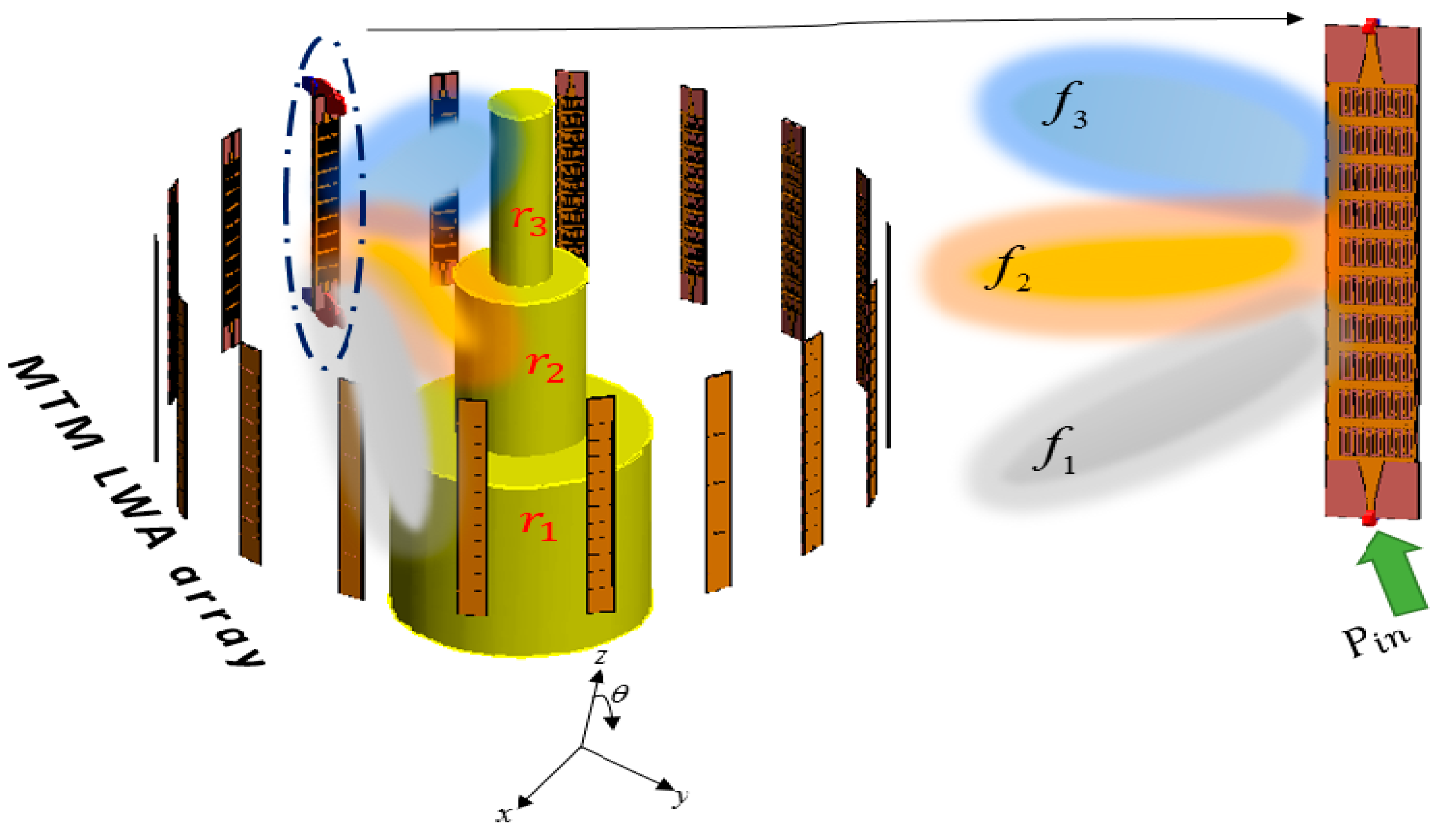
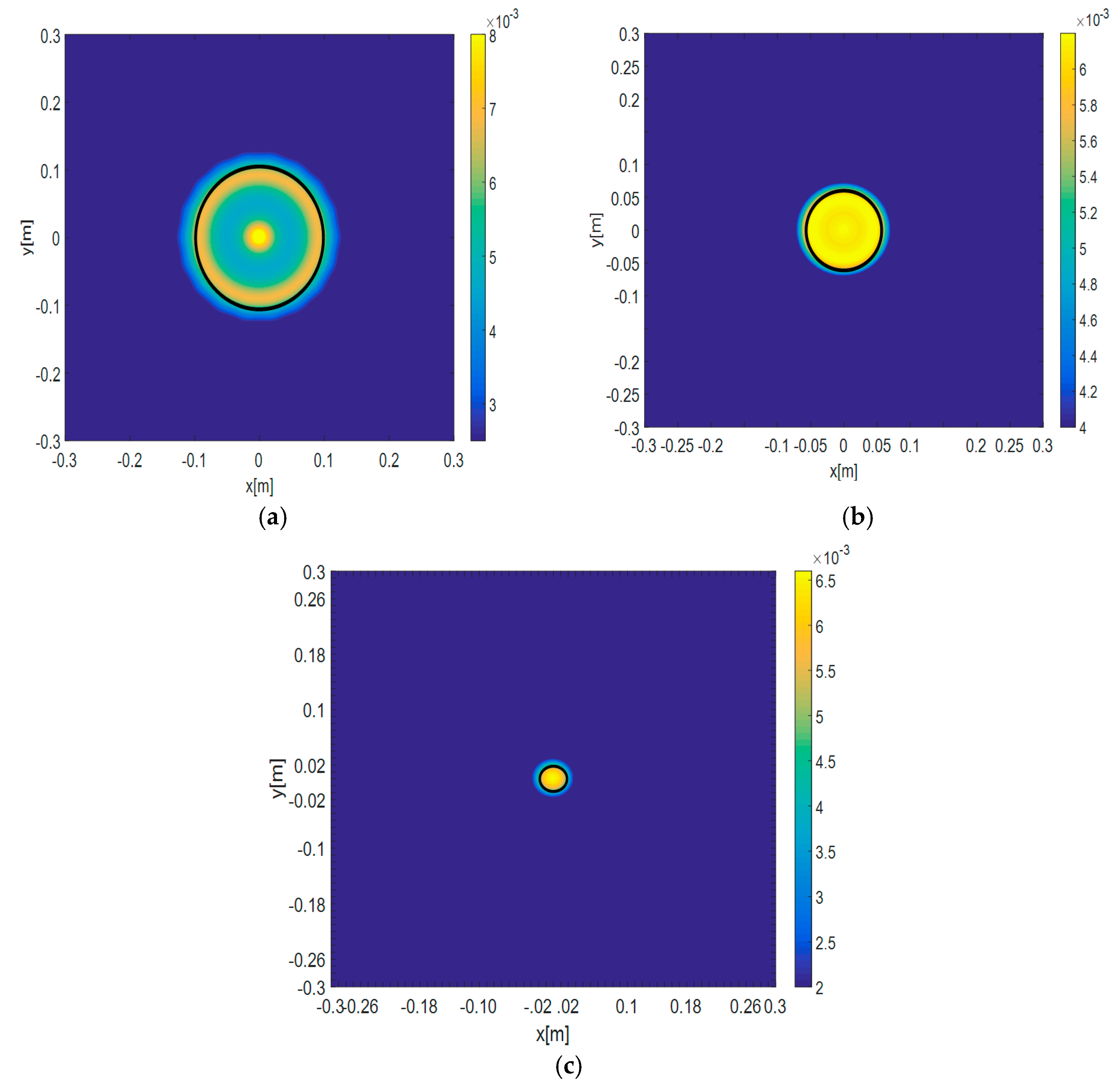
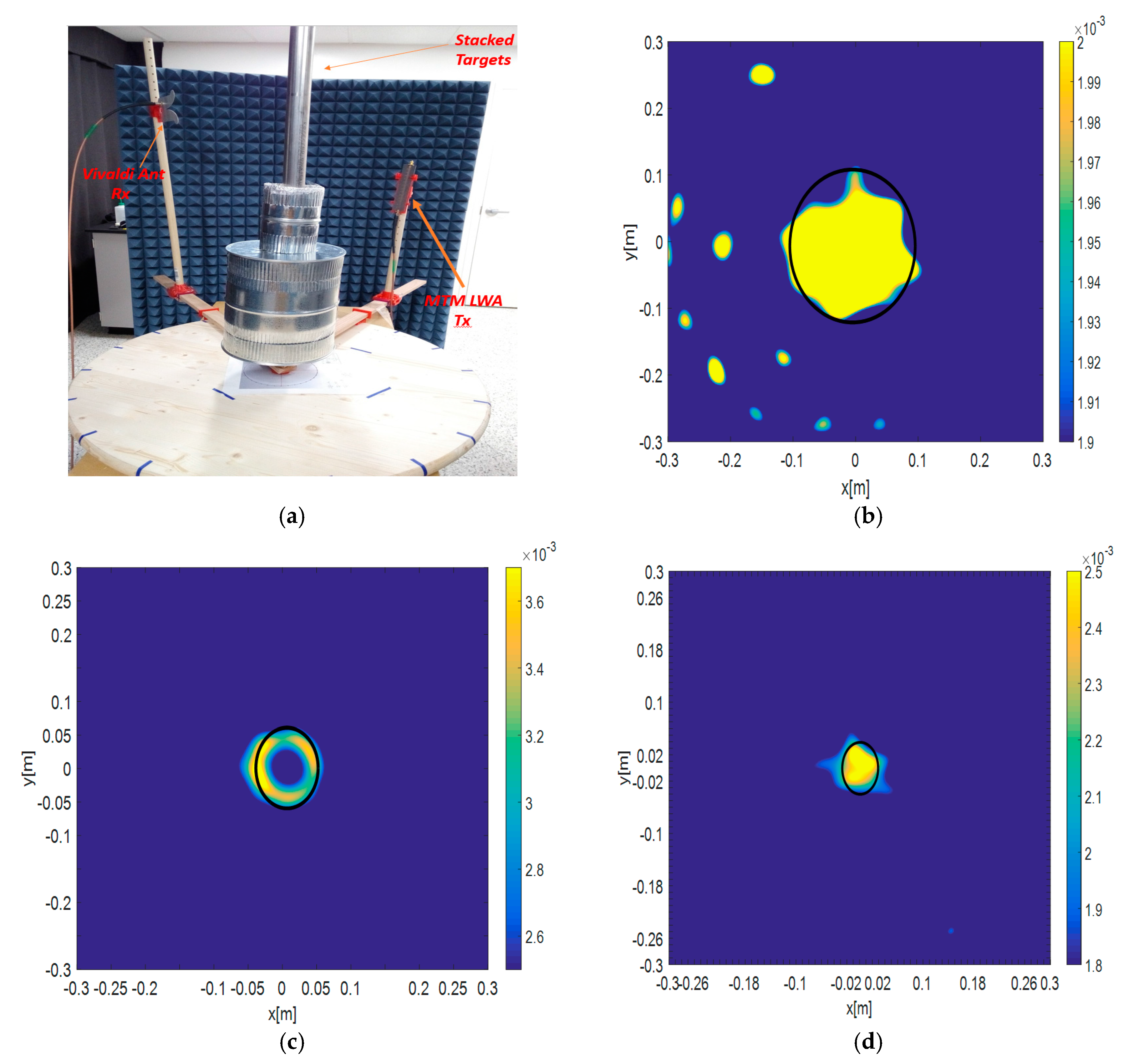
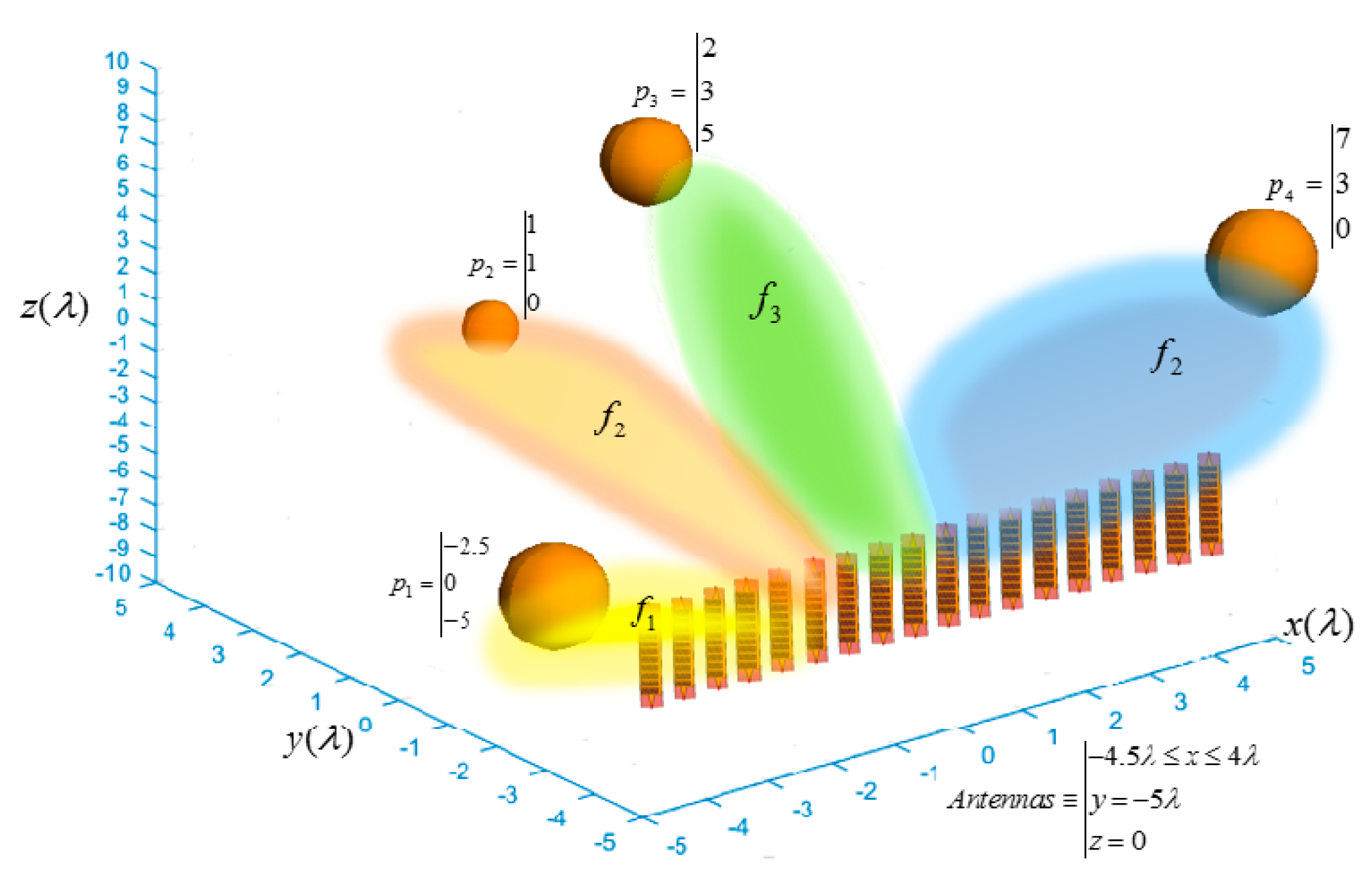
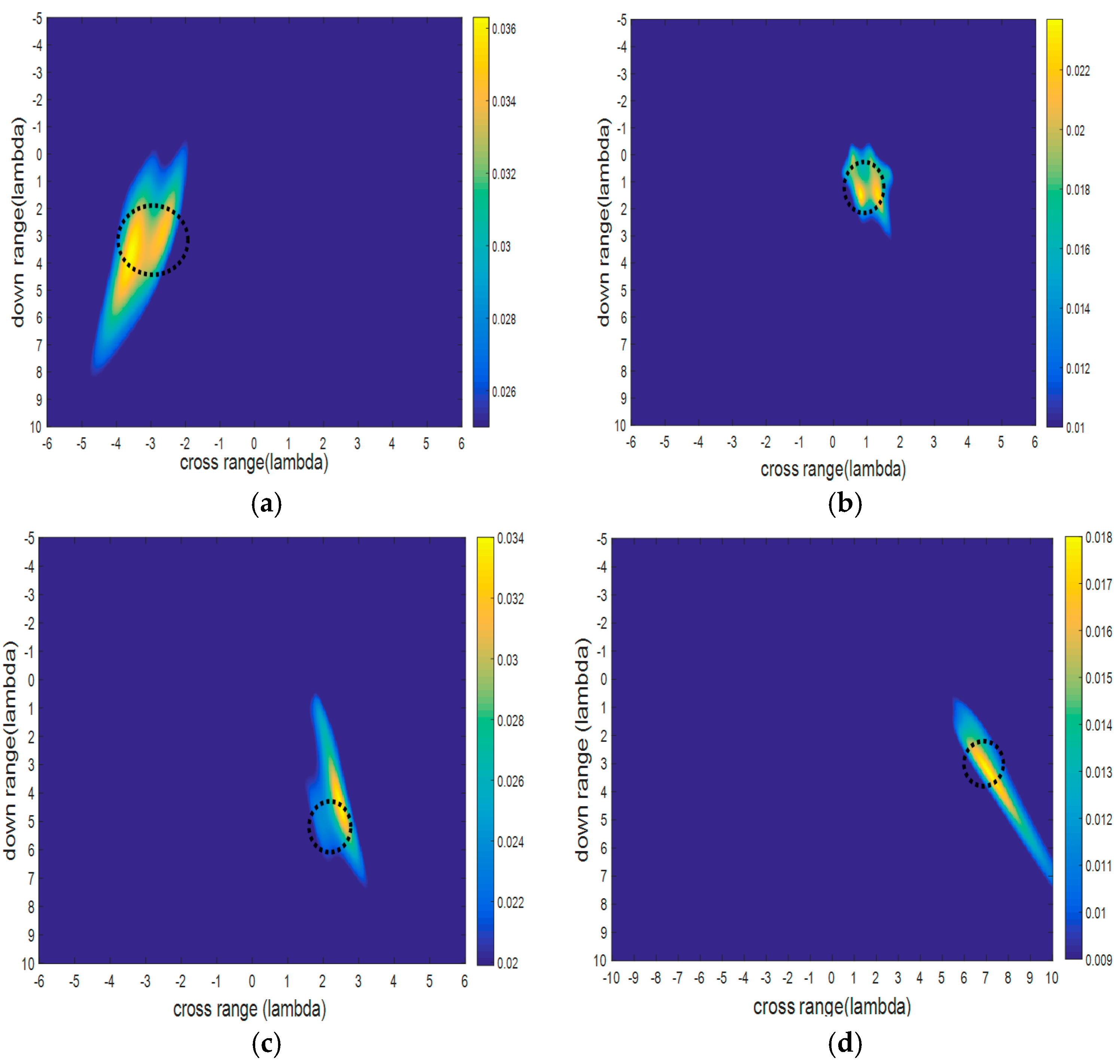
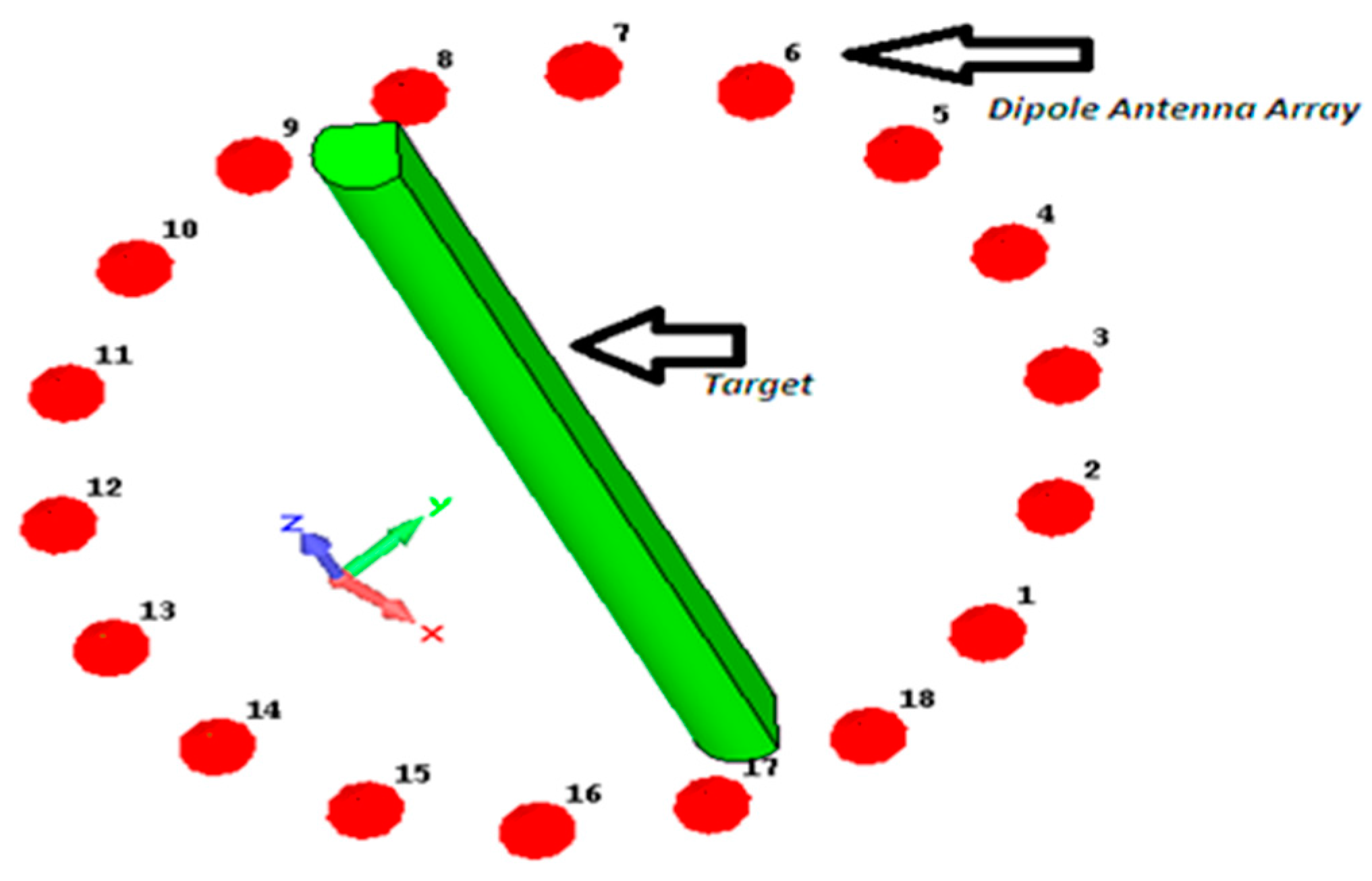
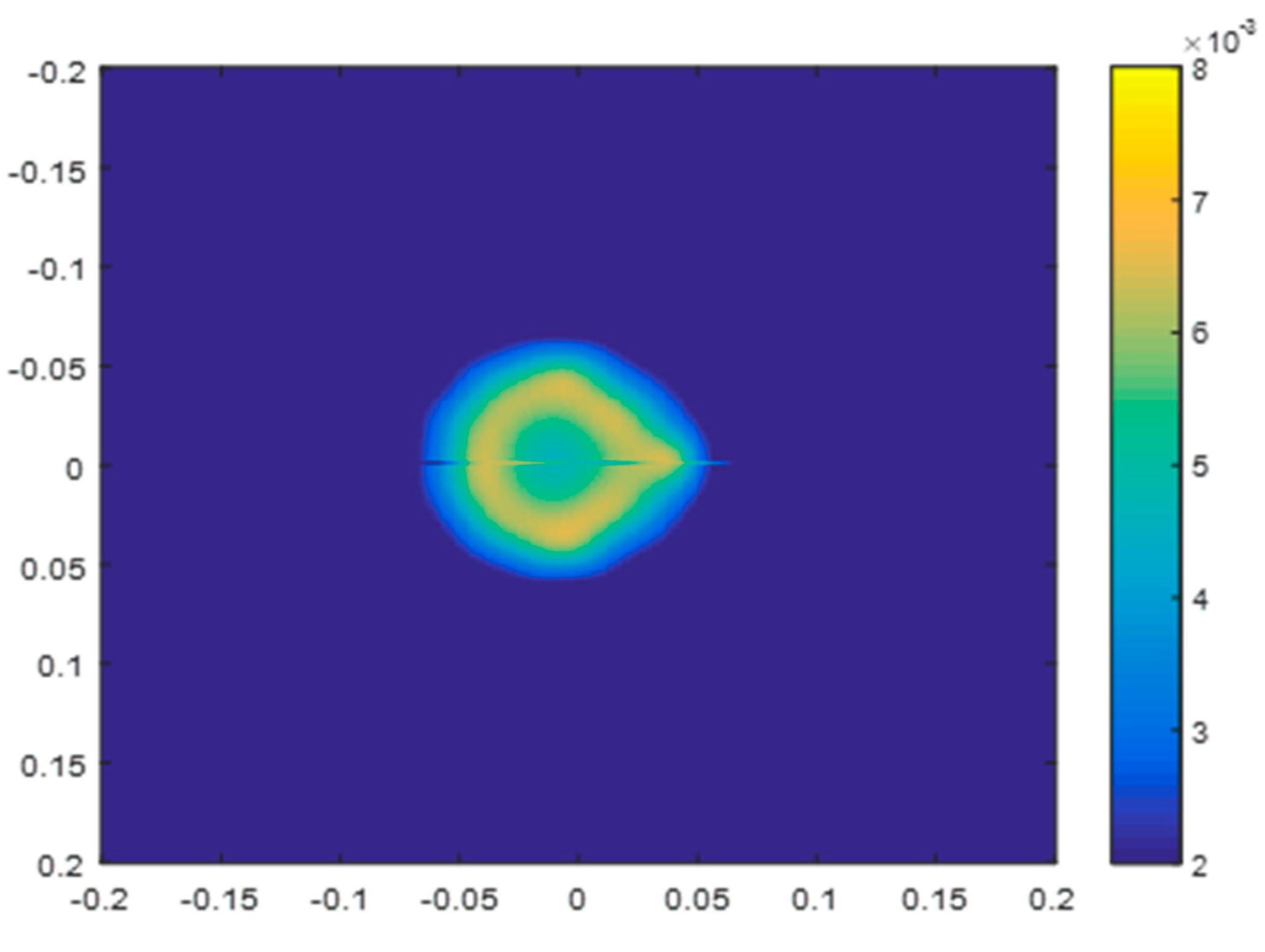
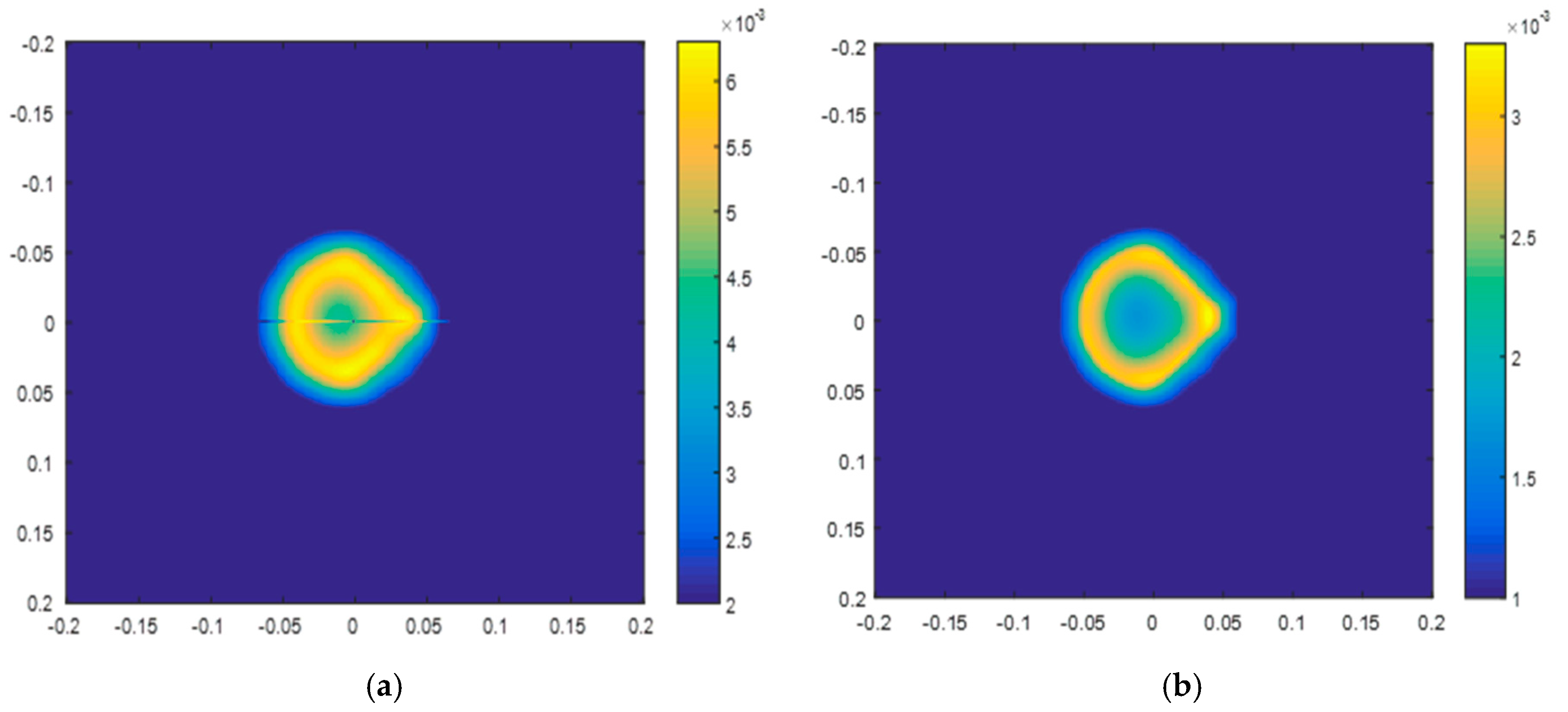
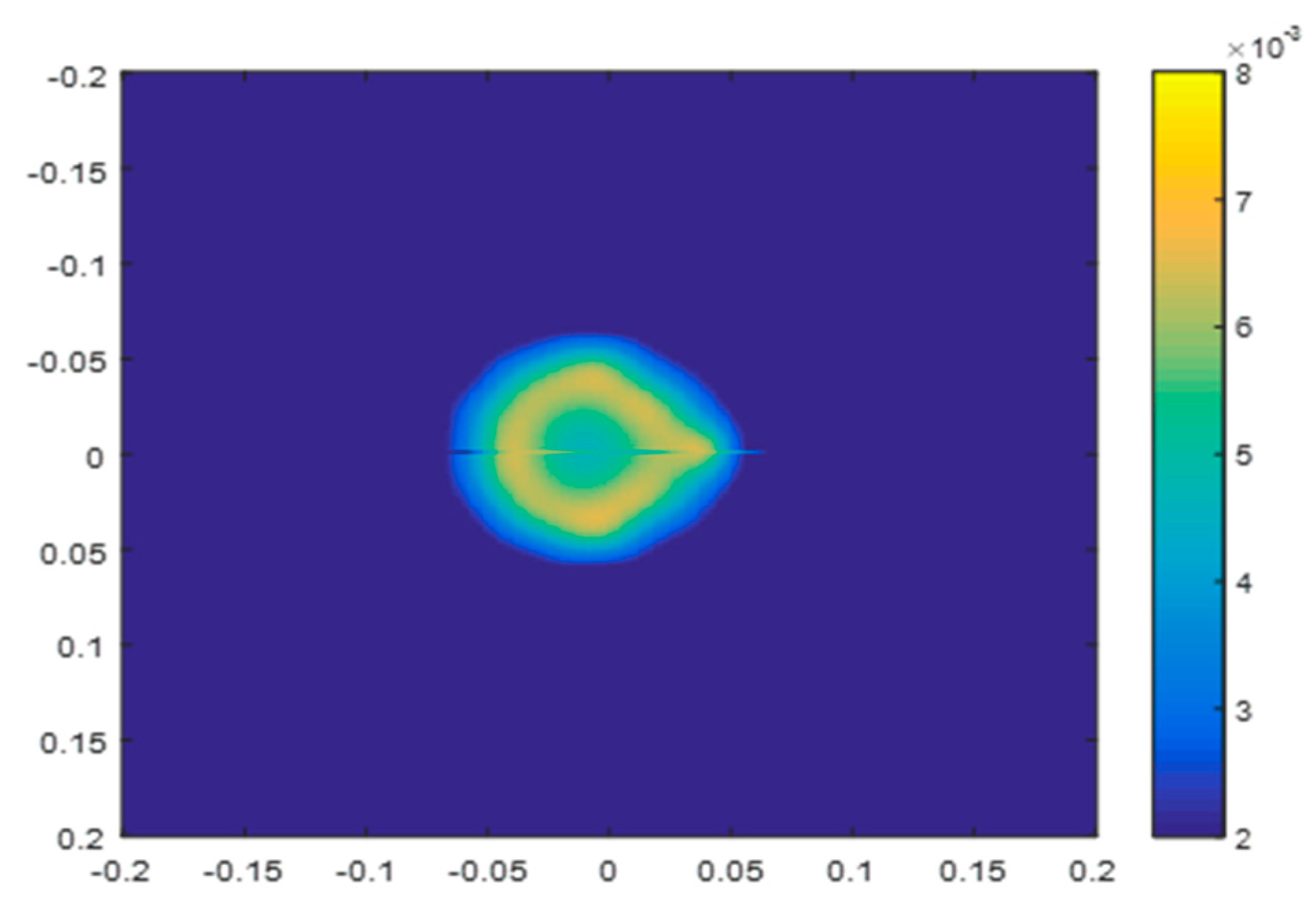
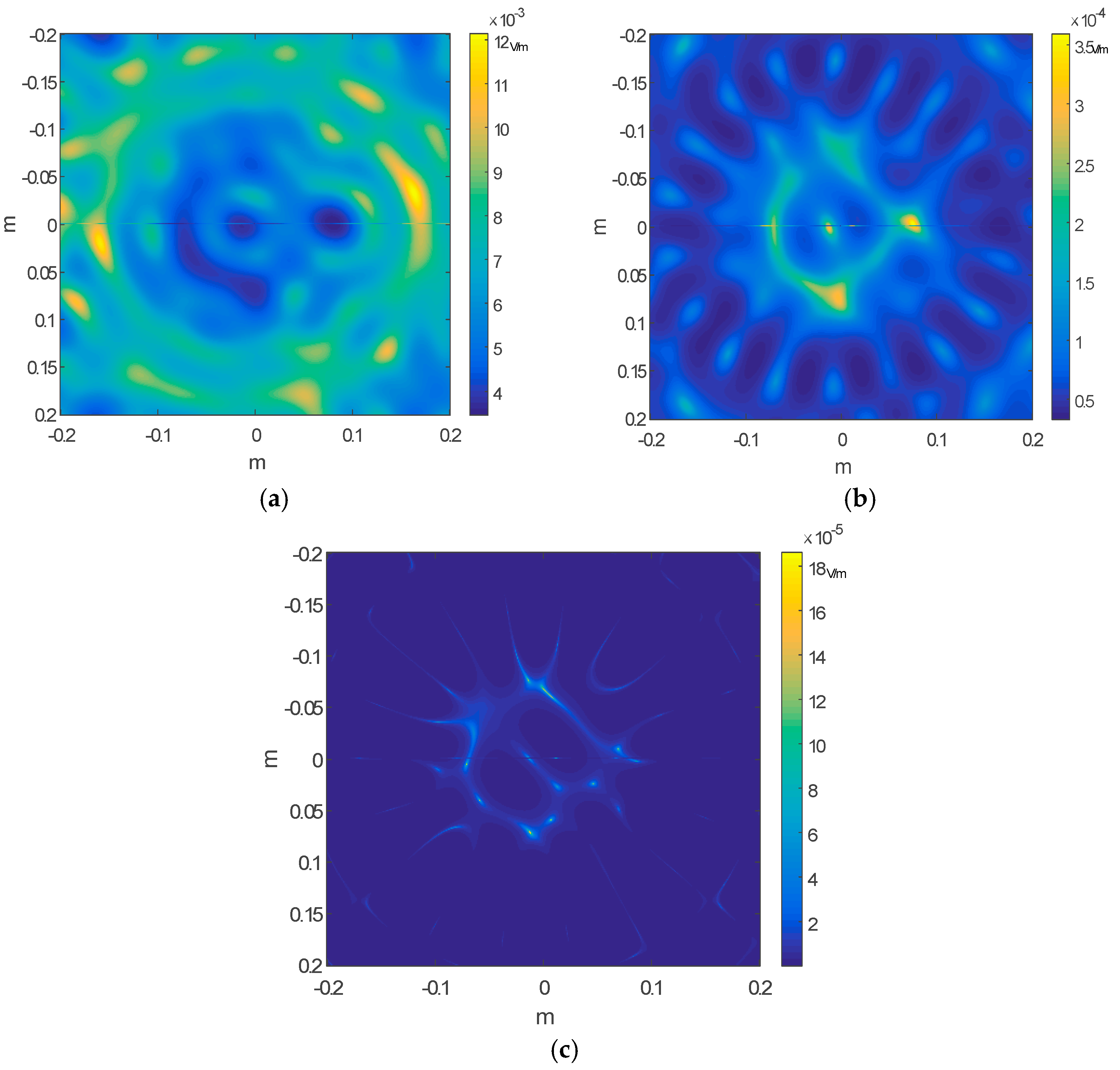
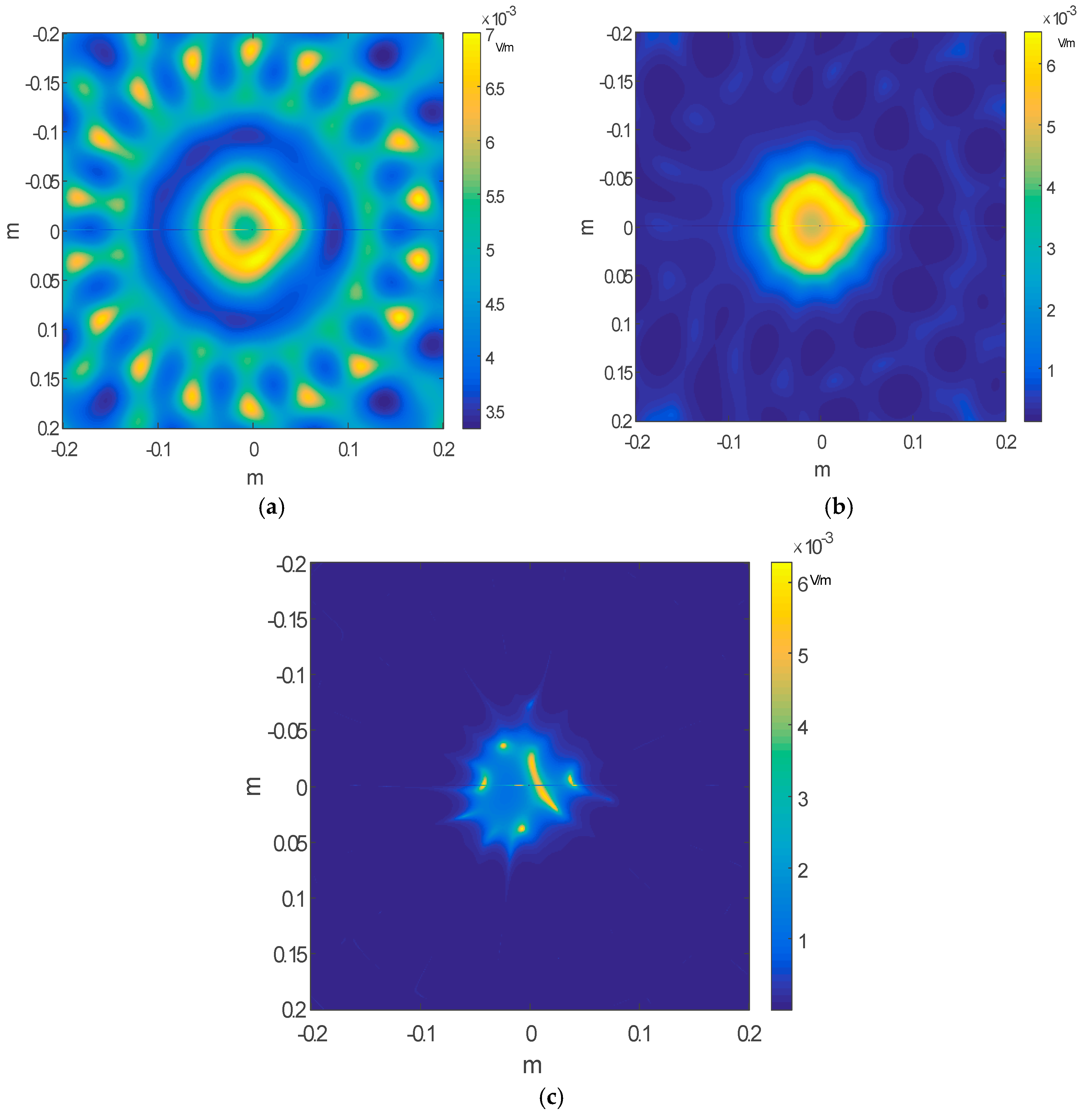
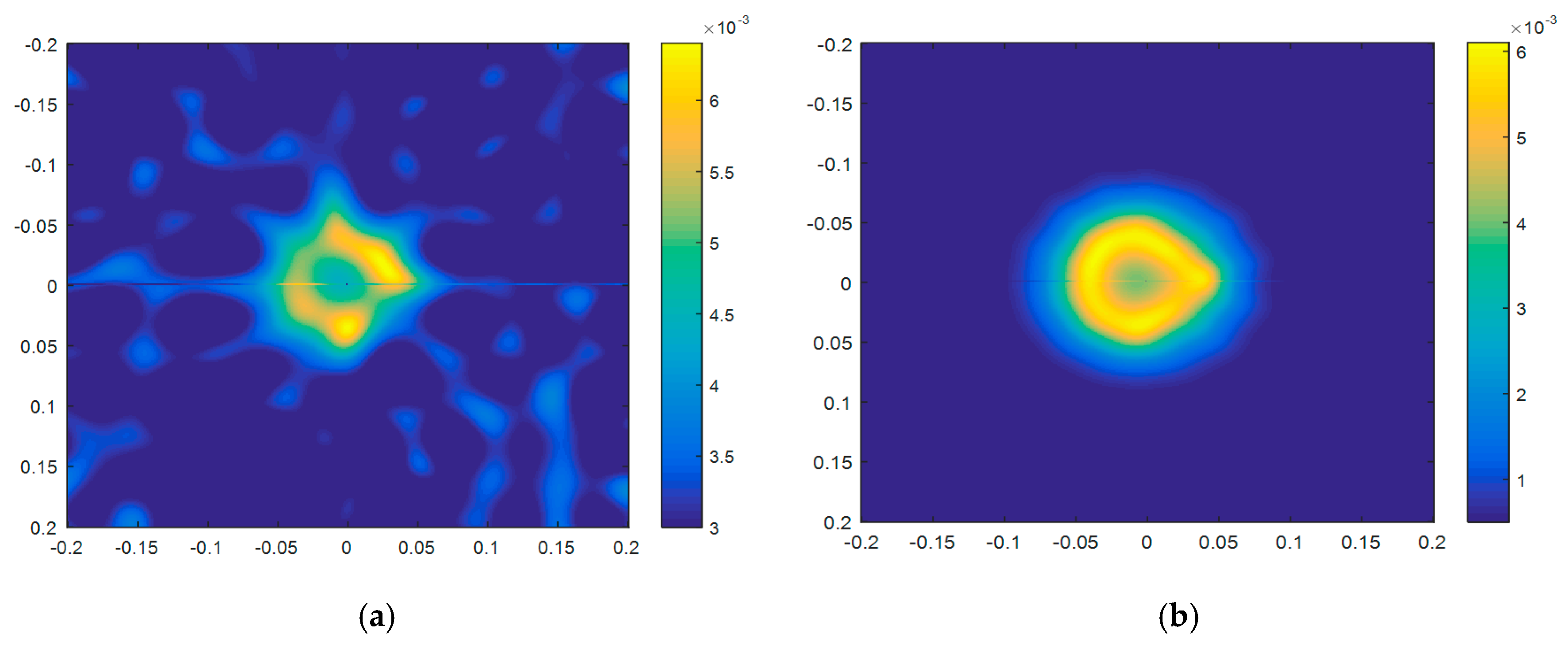
© 2017 by the authors. Licensee MDPI, Basel, Switzerland. This article is an open access article distributed under the terms and conditions of the Creative Commons Attribution (CC BY) license (http://creativecommons.org/licenses/by/4.0/).
Share and Cite
Salarkaleji, M.; Eskandari, M.; Chen, J.C.-M.; Wu, C.-T.M. Frequency and Polarization-Diversified Linear Sampling Methods for Microwave Tomography and Remote Sensing Using Electromagnetic Metamaterials. Electronics 2017, 6, 85. https://doi.org/10.3390/electronics6040085
Salarkaleji M, Eskandari M, Chen JC-M, Wu C-TM. Frequency and Polarization-Diversified Linear Sampling Methods for Microwave Tomography and Remote Sensing Using Electromagnetic Metamaterials. Electronics. 2017; 6(4):85. https://doi.org/10.3390/electronics6040085
Chicago/Turabian StyleSalarkaleji, Mehdi, Mohammadreza Eskandari, Jimmy Ching-Ming Chen, and Chung-Tse Michael Wu. 2017. "Frequency and Polarization-Diversified Linear Sampling Methods for Microwave Tomography and Remote Sensing Using Electromagnetic Metamaterials" Electronics 6, no. 4: 85. https://doi.org/10.3390/electronics6040085





